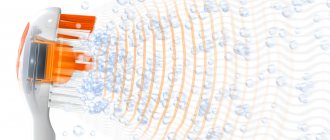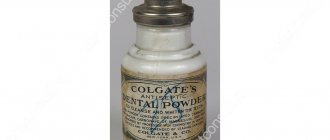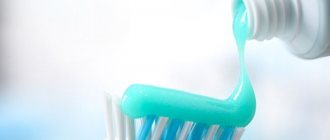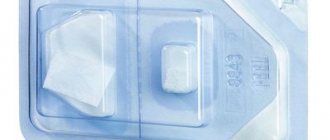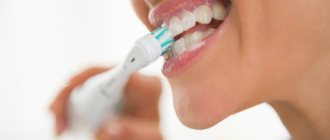Competent and thorough oral hygiene is an integral part of caring for your health and appearance. Agree, a beautiful, shining white smile immediately catches the eye and wins over your interlocutors. And if fresh breath and a great mood are added to snow-white teeth, communication will be guaranteed to be pleasant.
However, modern people are increasingly concerned about bad breath, dark plaque on the teeth, caries and various tissue inflammations. To prevent all these problems from affecting you, it is important to take effective care of your oral cavity by using antibacterial toothpaste.
What inflammations can bacteria cause?
Everyone knows that bacteria are the main cause of inflammatory processes in the oral cavity. Normally, we have aerobic microflora in our mouth, which takes part in the primary processes of food digestion, absorption of nutrients and vitamins.
But when foreign bacteria begin to displace beneficial bacteria and settle in their place, various diseases of the teeth and gums appear.
Caries is considered to be the most common dental problem. Almost everyone has encountered this disease. Caries appears as small faded spots on the enamel. These stains darken over time and the tooth begins to decay.
Common causes of caries are insufficient oral hygiene, improper, unbalanced diet, and sometimes oral trauma.
Superficial caries is accompanied by increased sensitivity of the enamel, deep caries is accompanied by the appearance of visible holes in hard tissues and more acute pain. Children often develop bottle caries due to prolonged use of pacifiers and pacifiers, as well as retention of food debris in the mouth after night feedings.
The consequence of untreated deep caries is most often pulpitis. The damage reaches the dentin, and then to the pulp chamber, which contains the neurovascular bundle. In rare cases, the pulp becomes inflamed due to infection carried through the bloodstream from other organs.
Pulpitis is characterized by severe pain, and sometimes by pus and fever.
Another common problem is a dental cyst or inflammatory process, which is characterized by the growth of tissue near the root. Most often, the cyst is provoked by pulpitis and periodontitis. The cyst is accompanied by swelling of the gums and severe pain.
Sometimes advanced pulpitis develops into periodontitis, inflammation of periodontal tissue, the structure that holds the roots of the teeth in the alveolus of the jaw. This complex disease provokes tooth mobility, purulent inflammation and even fever.
Other common oral diseases are:
- Periodontitis is an inflammation of the periodontium, which is manifested by bleeding gums and accumulation of pus in periodontal pockets.
- Periodontal disease is the loss of connection between the root and the jaw due to atrophy of the dental process of bone tissue. With periodontal disease, pus begins to accumulate in the periodontal pockets, the neck of the teeth is gradually exposed, which can provoke complete tooth loss.
The main cause of diseases of the teeth and gums, as a rule, is improper oral hygiene, ignoring antibacterial toothpastes and antibacterial rinses, and irregular teeth brushing. Sometimes diseases are provoked by infectious diseases, in which pathogenic bacteria penetrate into the dental tissues from the oral cavity, in which inflammation occurs, through cracks in the crowns or through the bloodstream from a diseased, infected organ.
Doctors include other causes of oral pathologies:
- poor nutrition and, accordingly, insufficient supply of nutrients to dental tissues;
- taking medications;
- excessive intake of certain elements into the body (for example, fluoride);
- metabolic disorders, hormonal shifts;
- reduced immunity;
- oral injuries;
- congenital anomalies of the dentition;
- hereditary predisposition to dental diseases;
- exposure to chemicals and radiation, working in hazardous industries or living in contaminated areas.
Mineral salts
Mineral salts and their complexes added to toothpastes have a beneficial effect on the oral mucosa, help improve blood circulation, dissolve mucus, and prevent the formation of soft plaque. Salts are able to maintain the acid-base balance, normalizing metabolic processes, alkalizing the oral cavity and, creating an optimal environment for enamel mineralization processes, stimulate salivation, thus ensuring the implementation of the protective and buffering functions of saliva. Some of the salt additives contain macro- and microelements that can be included in the hard tissues of the tooth. The high concentration of salts in pastes causes an increased outflow of tissue fluid from the inflamed gums, and also has some analgesic effect.
Toothpastes contain sea salt and table salt. Mineral waters rich in salts and brine from the Pomorie estuaries are used, which also improves the blood supply to periodontal tissues and their trophism. Sodium bicarbonate (baking soda) is a mild abrasive that neutralizes the acidic activity of bacteria.
Salt-containing toothpastes
indicated for significant formation or tendency to form non-mineralized dental plaque, chronic inflammatory diseases of the periodontium and oral mucosa, increased viscosity of saliva, hyposalivation.
Who can use antibacterial paste?
This product can be used by all adults. Antibacterial pastes are harmless and can be useful even for those with sensitive teeth and orthodontic structures.
Antibacterial toothpastes are designed to prevent the development of inflammation in the mouth and eliminate inflammation and disease in the earliest stages. Dentists strongly recommend using such products for periodontitis and periodontal disease, however, they will also be useful in the initial stages of gum inflammation.
Typically, antibacterial toothpastes contain:
- extracts of medicinal herbs to reduce gum sensitivity and eliminate inflammation;
- pyrophosphates for protection against tartar;
- additives for a pleasant taste and fresh breath;
- substances that protect against caries.
One of the most popular and effective antibacterial toothpastes is ASEPTA ACTIVE ® prophylactic paste. This product contains extracts of sage, St. John's wort and calendula, lime and mint, pyrophosphates and xylitol to protect teeth from caries. An important element of toothpaste is the enzyme papain, which breaks down the protein matrix of dental plaque, slows down the formation of dental plaque, and helps dissolve pigmented plaque without damaging tooth enamel. Enzymatic breakdown of dental plaque ensures high-level hygiene.
The paste provides comprehensive care - simultaneous protection of gums from inflammation and teeth from caries.
We hope your teeth and gums will always be in order, and you will only need antibacterial toothpastes for preventive purposes!
How to choose a paste with an antiseptic
The choice of antiseptic toothpastes is incredibly wide, but you need to pay attention to the concentration of the antiseptic. If it is less than 0.1%, the paste can be used daily; if higher - only in courses and with caution. Otherwise, when choosing antiseptic pastes, the same things are important as for regular ones.
- Composition
- it is better that, in addition to antiseptics, it includes plant extracts. They will provide additional care for your gums. - Consistency
. If you have gum disease or hypersensitivity, it is better to choose gels. They are more tender. - Foaminess
. Too much foam is a sign of SLS content, which dries out the oral cavity. It's better to avoid them.
The effect of most antiseptic toothpastes lasts from 12 to 24 hours. Using this paste just once a day, you can reliably protect your teeth and oral cavity from bacteria, caries and other problems. In addition, you will get rid of bad breath, if any.
Toothpastes with chlorhexidine
Toothpaste CURAPROX PerioPlus SUPPORT chx 0.09%
Elgidium Anti-plaque toothpaste with chlorhexidine
Dentaid Perio-Aid tooth gel paste with chlorhexidine 0.12%
Clinical researches
The products in the Asept line have proven clinical effectiveness and are therefore sold in pharmacies. For example, multiple clinical studies have proven that regular use of preventive toothpaste ASEPTA ACTIVE for a month can reduce bleeding gums by 60%, improve the overall condition of the oral cavity by 44% and reduce inflammation by 33%.
Sources:
- Report on determining/confirming the preventive properties of toothpaste “ASEPTA PLUS” GENTLE WHITENING” Author: doctor-researcher A.A. Leontyev, head Department of Preventive Dentistry, Doctor of Medical Sciences, Professor S.B. Ulitovsky First St. Petersburg State Medical University named after. acad. I.P. Pavlova, Department of Preventive Dentistry
- Clinical and laboratory assessment of the influence of domestic therapeutic and prophylactic toothpaste based on plant extracts on the condition of the oral cavity in patients with simple marginal gingivitis. Doctor of Medical Sciences, Professor Elovikova T.M.1, Candidate of Chemical Sciences, Associate Professor Ermishina E.Yu. 2, Doctor of Technical Sciences Associate Professor Belokonova N.A. 2 Department of Therapeutic Dentistry USMU1, Department of General Chemistry USMU2
- Report on the determination/confirmation of the preventive properties of personal oral hygiene products “ASEPTA PLUS” Remineralization doctor-researcher A.A. Leontyev, head Department of Preventive Dentistry, Doctor of Medical Sciences, Professor S.B. Ulitovsky First St. Petersburg State Medical University named after. acad. I.P. Pavlova, Department of Preventive Dentistry
- Clinical studies of antisensitive toothpaste “Asepta Sensitive” (A.A. Leontyev, O.V. Kalinina, S.B. Ulitovsky) A.A. LEONTIEV, dentist O.V. KALININA, dentist S.B. ULITOVSKY, Doctor of Medical Sciences, Prof. Department of Therapeutic Dentistry, St. Petersburg State Medical University named after. acad. I.P. Pavlova
Children - separately
JSC Family Doctor - How to choose toothpaste for a child
Children should brush their teeth with special children's toothpastes. Firstly, the child is just mastering the cleaning procedure and may swallow foam or even intentionally swallow the paste. Manufacturers take this possibility into account and make baby toothpastes as harmless as possible. But still check the ingredients when buying pasta for your children. It should not contain fluorine, triclosan, chlorhexidine, sodium lauryl sulfate, or artificial colors.
The second reason why special pastes are used for children is the sensitivity of the enamel of baby teeth. In order not to damage the enamel, the paste that the child uses should have low abrasiveness, and there should be no whitening components, which are necessarily aggressive, in it at all.
Another tip: choose the flavor of your pasta carefully. It should be pleasant, and yet the paste is not candy; there is no need to provoke the child: he should spit it out, not swallow it.
Flavoring fillers
Flavoring fillers are used in pastes to remove the effect of the not very pleasant taste of individual components. As a rule, menthol, various types of mint, eucalyptus, anise, vanillin and non-caries-stimulating sweeteners such as saccharin are used for this.
Some components, by the way, can perform a number of functions at once: they are both a sweetener and a flavoring agent.
In general, the paste contains artificial colors and saccharin.
